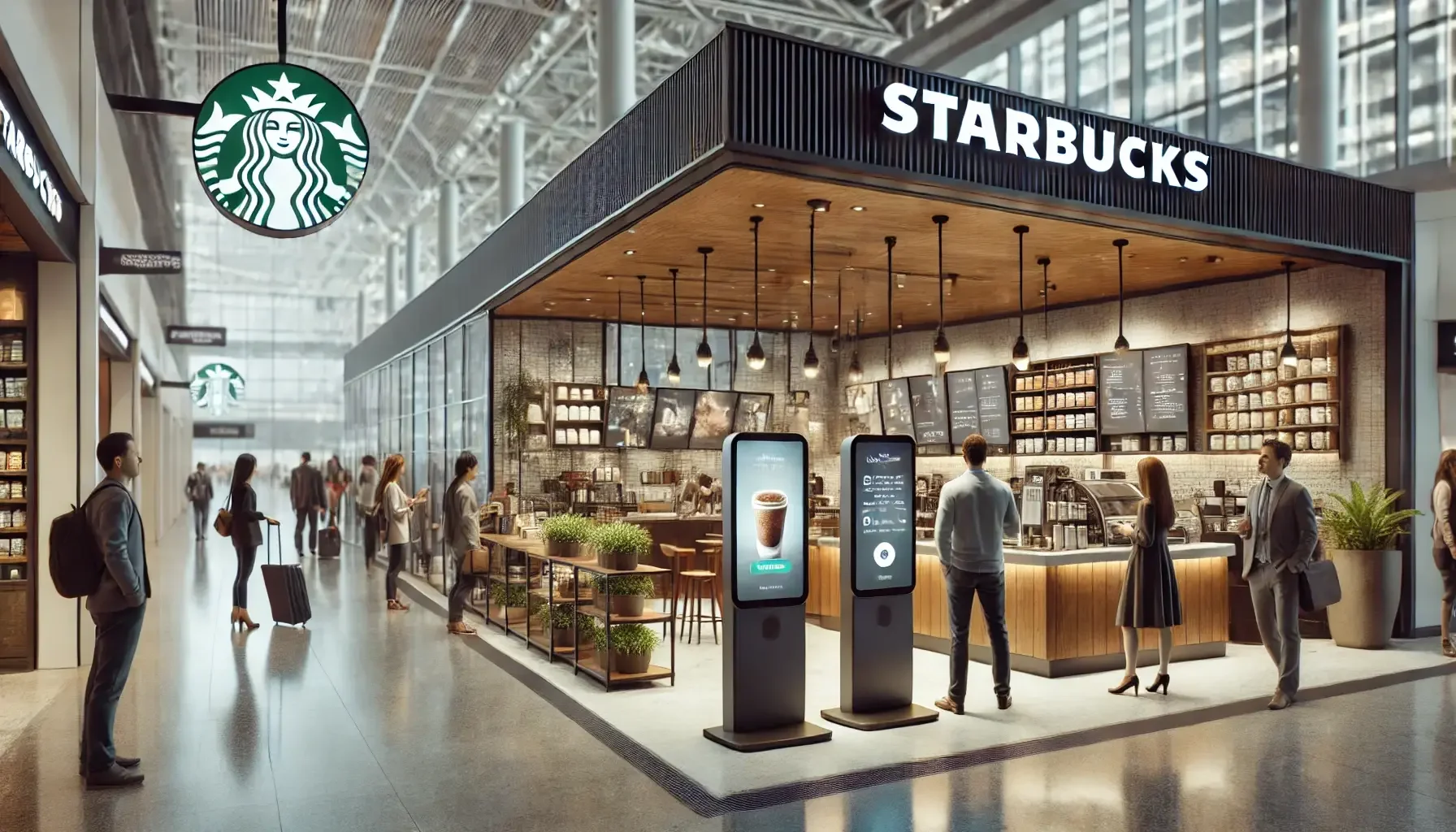North America’s Restructuring: A Shift Towards Efficiency and Technology
When Starbucks made the tough decision to close 430 stores in North America and lay off 900 corporate employees, it wasn't just about reducing costs; it was about a strategic pivot towards a digitally-first and operationally efficient future. These closures, a response to declining sales in its home market, are part of a broader restructuring that focuses on enhancing customer experience, improving margins, and optimizing digital infrastructure.
As the company faces pressure from changing consumer behaviors, particularly in North America, it’s looking beyond traditional brick-and-mortar operations and embracing technology to streamline its global operations. At the heart of this transformation are Starbucks' prepaid loyalty system, the self-service kiosks, and the mobile app, all of which are redefining how Starbucks operates and interacts with customers on a global scale.
1. The Prepaid Loyalty System: A Hidden Financial Asset
One of Starbucks’ most significant, yet often overlooked, financial assets is its loyalty program, which currently holds $1.85 billion in stored-value balances globally. These balances reflect money customers have prepaid onto their Starbucks Cards or mobile accounts, and they serve as an essential component of Starbucks' financial strategy.
Let’s dive into the financial benefits of this system:
- Interest-Free Capital: Starbucks has $1.85 billion tied up in these prepaid balances, which it can use to fund its operations without incurring interest payments. This is interest-free capital from customers, giving Starbucks an immediate source of liquidity. At a 4% interest rate, this could translate into $74 million in annual interest income, offering Starbucks a financial advantage without needing to borrow or raise external funds. Creative services also play a role in promoting this loyalty system through digital marketing campaigns that attract and retain customers.
- Breakage Revenue: In addition to the interest income, Starbucks also earns breakage revenue from unspent balances. In fiscal year 2024, Starbucks recognized $207.6 million from unredeemed funds on its loyalty cards. This is money that Starbucks gets to keep without having to provide anything in return. Breakage revenue, a side effect of the prepaid system, is a source of free profit that contributes directly to Starbucks' bottom line.
This prepaid system, when combined with its loyalty program, not only enhances customer retention but also offers Starbucks a steady flow of capital that it can reinvest in its global expansion, digital initiatives, and store innovations.
2. Self-Service Kiosks: Enhancing Efficiency While Reducing Labor Costs
Alongside its loyalty system, Starbucks is deploying self-service kiosks in key locations like airports, grocery stores, and hospitals. These kiosks are part of Starbucks’ broader strategy to reduce labor costs and improve operational efficiency. By adopting web design and development strategies that make kiosk interfaces seamless and user-friendly, Starbucks ensures that each transaction is smooth, fast, and accurate, enhancing both operational efficiency and customer satisfaction.
Here’s how these kiosks are making a difference:
- Cost of Implementation: The cost to implement a self-service kiosk typically ranges from $2,500 to $10,000 per unit, depending on factors like customization, location, and features (swiforce.com). While this is an upfront investment, it pays off quickly as these kiosks help boost revenue by 30% per transaction through upselling and order accuracy.
- Labor Savings: The most significant benefit, however, is the reduction in labor costs. By replacing cashiers and order-takers with kiosks, Starbucks can cut down on the need for front-line staff. This allows the company to reallocate labor to higher-value areas, such as quality control and drink preparation. The kiosks are especially useful in high-traffic areas where speed and accuracy are critical, helping to ensure that Starbucks serves more customers without the need for additional staffing.
- Customer Experience: Despite the labor savings, kiosks also improve the customer experience. Customers can order at their own pace, customize their drinks, and avoid long lines, which not only speeds up service but also leads to increased customer satisfaction. In busy airports or urban centers, where time is often of the essence, kiosks provide a much-needed convenience that enhances Starbucks' reputation as a fast, reliable service provider.
By integrating self-service kiosks into its operations, Starbucks not only reduces its operational costs but also enhances the overall customer experience, making it a win-win situation for both the company and its customers.
3. The Starbucks App: A Digital Hub for Customer Engagement and Operational Efficiency
Arguably the most powerful tool in Starbucks’ digital transformation is its mobile app. The app, which serves over 34.3 million active users in the U.S. alone, is the central hub for Starbucks’ customer loyalty and engagement strategy. This app exemplifies digital marketing strategies by utilizing data to target and personalize offers, driving more traffic and engagement to stores. Through its connection with loyalty rewards, the app amplifies Starbucks’ financial strategies, creating a constant loop of interaction between the brand and the customer. It allows customers to order ahead, pay via Starbucks Card, earn loyalty points, and manage their accounts.
Here’s how the app contributes to Starbucks’ growth:
- Prepaid Balances and Mobile Payments: The Starbucks app encourages customers to preload money onto their Starbucks Cards, creating a digital-first experience that benefits both the customer and Starbucks. Every time a customer loads funds onto their app, Starbucks benefits from having immediate access to this capital, which is used to fund operations or digital initiatives. It’s a win-win: Starbucks secures immediate liquidity, and customers enjoy a seamless, convenient experience.
- Loyalty Program Integration: The app’s integration with Starbucks’ loyalty program is a game-changer. Customers earn points for every purchase they make, and these points can be redeemed for rewards. Starbucks has built a personalized experience around these rewards, using customer data to tailor promotions and offers. This level of personalization encourages customers to return more frequently, which drives repeat business and ultimately increases sales per customer.
- Financial Efficiency: The app is an operational asset for Starbucks. By streamlining ordering and payments, Starbucks reduces transaction times and operating costs. It also helps the company manage its finances more effectively by reducing cash handling and enabling a cashless experience for customers. This digital-first approach is becoming increasingly important as consumers, particularly younger generations, demand more convenient, efficient, and tech-friendly ways to shop.
The app isn’t just a customer tool, it’s a financial strategy that helps Starbucks drive sales, engage customers, and optimize operations. Starbucks’ ability to leverage data through its app is an integral part of its broader effort to maintain its competitive edge in an increasingly digital retail environment.
4. Global Expansion: A Digital-First Approach to International Growth
While the store closures in North America might seem like a retreat, they’re actually setting the stage for Starbucks’ continued global expansion. Starbucks is leveraging its digital infrastructure to drive growth in regions where mobile-first and convenience-based shopping are the future. In Asia and the Middle East, Starbucks is already making substantial headway.
In China, Starbucks has successfully integrated with WeChat and Alipay, two of the most widely used mobile payment systems. By implementing branding guidelines that are region-specific and culturally relevant, Starbucks ensures that its expansion resonates with local consumers, driving adoption and growth in diverse markets. This allows customers to order and pay seamlessly through platforms they already use, creating a more fluid and efficient customer experience. The app’s ability to personalize customer interactions is critical in markets where localization plays a key role in brand adoption.
Similarly, in the Middle East, Starbucks is adapting to local preferences by offering customized beverages and local rewards through its app. The integration of self-service kiosks in regions like the UAE and Saudi Arabia further strengthens Starbucks’ position as a leader in the premium coffee market, where consumers are increasingly looking for speed, personalization, and convenience.
Conclusion: Starbucks' Digital-First Future
Starbucks is making a bold, strategic move into a digital-first future. The company is not just responding to the changing landscape in North America but actively embracing technology to streamline operations, enhance customer experiences, and boost profitability. In partnership with a Centric, Starbucks has positioned itself as a leader in creating a robust digital ecosystem that maximizes the potential of both physical and digital touchpoints.
By leveraging its prepaid loyalty system, self-service kiosks, and mobile app, Starbucks is positioning itself as not just a coffee retailer but as a global digital leader in retail. The $800 million in interest income generated from its prepaid balances and breakage revenue shows that Starbucks is not just focusing on increasing store count but also on maximizing the potential of its existing assets.
The company’s ability to reduce labor costs, optimize store operations, and personalize the customer experience through technology is giving it the edge in both domestic and international markets. As Starbucks continues to embrace technology, it will remain a leader in the coffee industry, proving that the future of retail isn’t just about physical stores, it’s about creating seamless digital experiences that cater to evolving consumer expectations.









